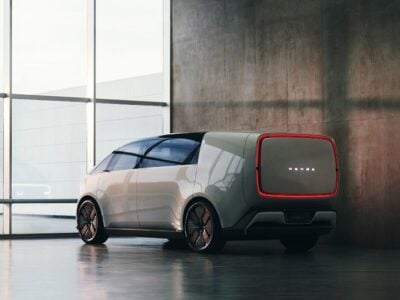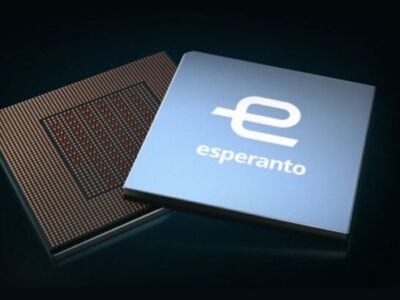
Volkswagen introduces AR head-up display in the compact class
The Augmented Reality head-up display projects relevant information onto the windscreen, separated into two fields and levels. The technical heart of the Augmented Reality Head-up Display is the Picture Generation Unit (PGU), which is located deep inside the instrument panel. A high-intensity LCD display sends the beams it generates onto two flat mirrors; special optics separate the components for the near and far planes. The plane mirrors direct the rays onto a large concave mirror with electrical adjustment. From there, they reach the windscreen and thus the driver’s field of vision. At an apparent distance of almost 10 metres, the driver sees the symbols just as sharply as the real environment.
The AR Creator, which resides as software in one of the two central computers of Volkswagen’s ID. models, serves as the image generator. The AR Creator calculates the placement of the symbols to match the environment. It is based on raw data from the front camera, the radar sensor and the navigation map. The displays that appear in the large window are stabilised against the movements of the car and adapted to the geometry of the projection optics.
The display is divided into two levels – a short-range window and a long-range window. The long-range window shows information from the assistance systems as well as the turn arrows and the start and destination points of the navigation. Below the large long-range window is the short-range window as a flat band. It shows the current speed, the traffic signs and the assistance and navigation symbols as static displays. They appear to hover about three metres in front of the driver.
These displays are appropriately superimposed on the real outside world and dynamically displayed. For example, when the vehicle approaches an intersection where the navigation route says it should turn, the driver sees two indications: first, an advance notice on the road surface, followed by three arrows located at the intersection. The closer the driver gets to the intersection, the larger the arrows become, and at the same time their textures fade to keep the view of the road clear. In developing the system, Volkswagen says it has placed great emphasis on sparing display: The driver should in no way be inundated with stimuli.
The Lane Assist function is also visualised in the long-range window: If the vehicle approaches a boundary line at the edge of the lane without flashing, this is displayed in orange. When Travel Assist is switched on, which guides the car in the middle of the lane, two green lines appear. During a subsequent journey, the display marks the vehicle in front with a coloured stripe, provided ACC distance control or Travel Assist is active. When the assistance systems are switched off, the driver sees a red warning signal if he is tailgating so closely that a critical situation arises.
More information: https://www.volkswagen-newsroom.com/en
Related articles:
How Automotive Displays can meet Functional Safety
EB rolls Augmented Reality software framework
Continental invests in next-gen head-up display
Concept Car highlights human-car relationship
Volkswagen shifts R&D focus to digitisation, more electromobility
Central server takes control in Volkswagen’s ID.3
 If you enjoyed this article, you will like the following ones: don't miss them by subscribing to :
eeNews on Google News
If you enjoyed this article, you will like the following ones: don't miss them by subscribing to :
eeNews on Google News




